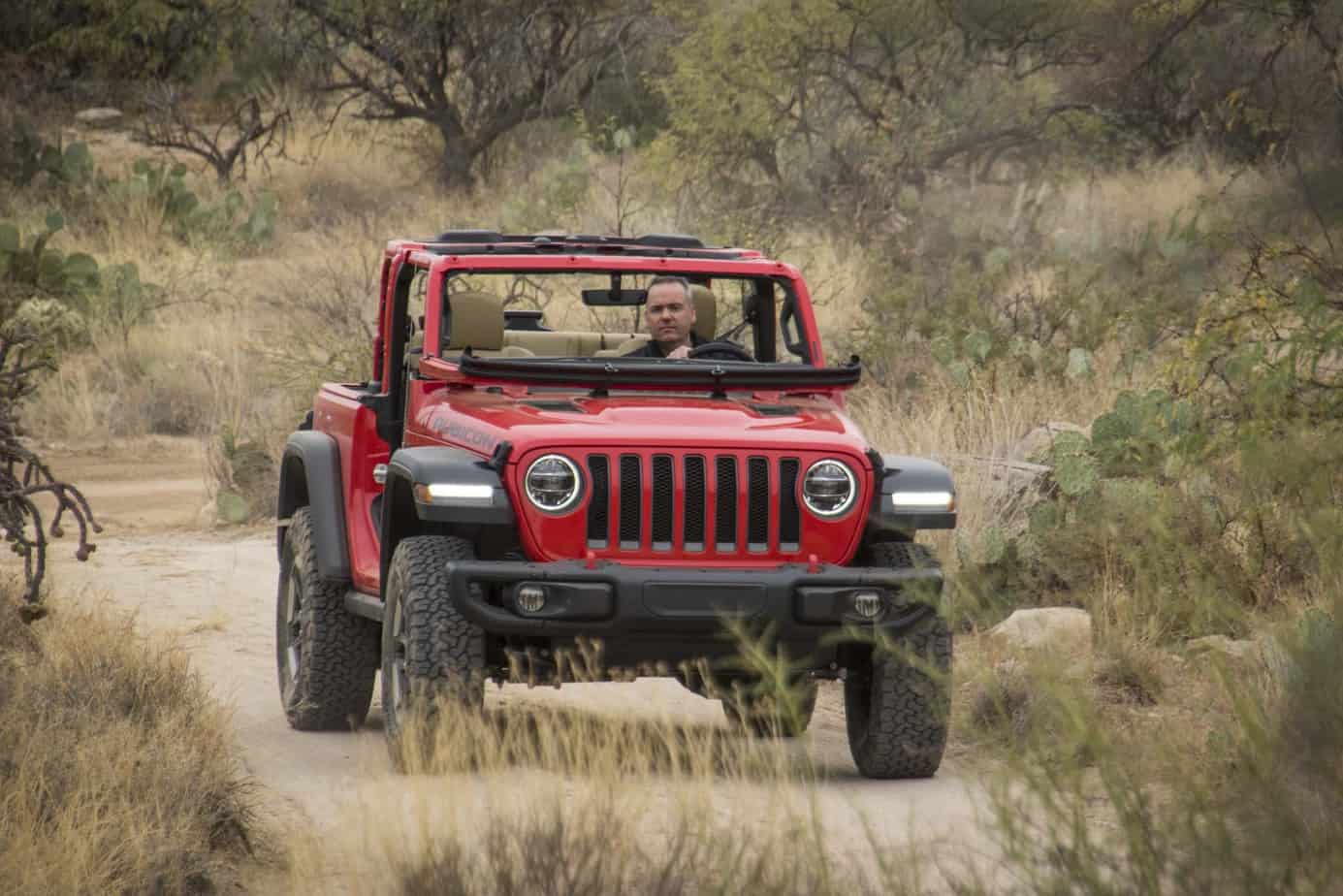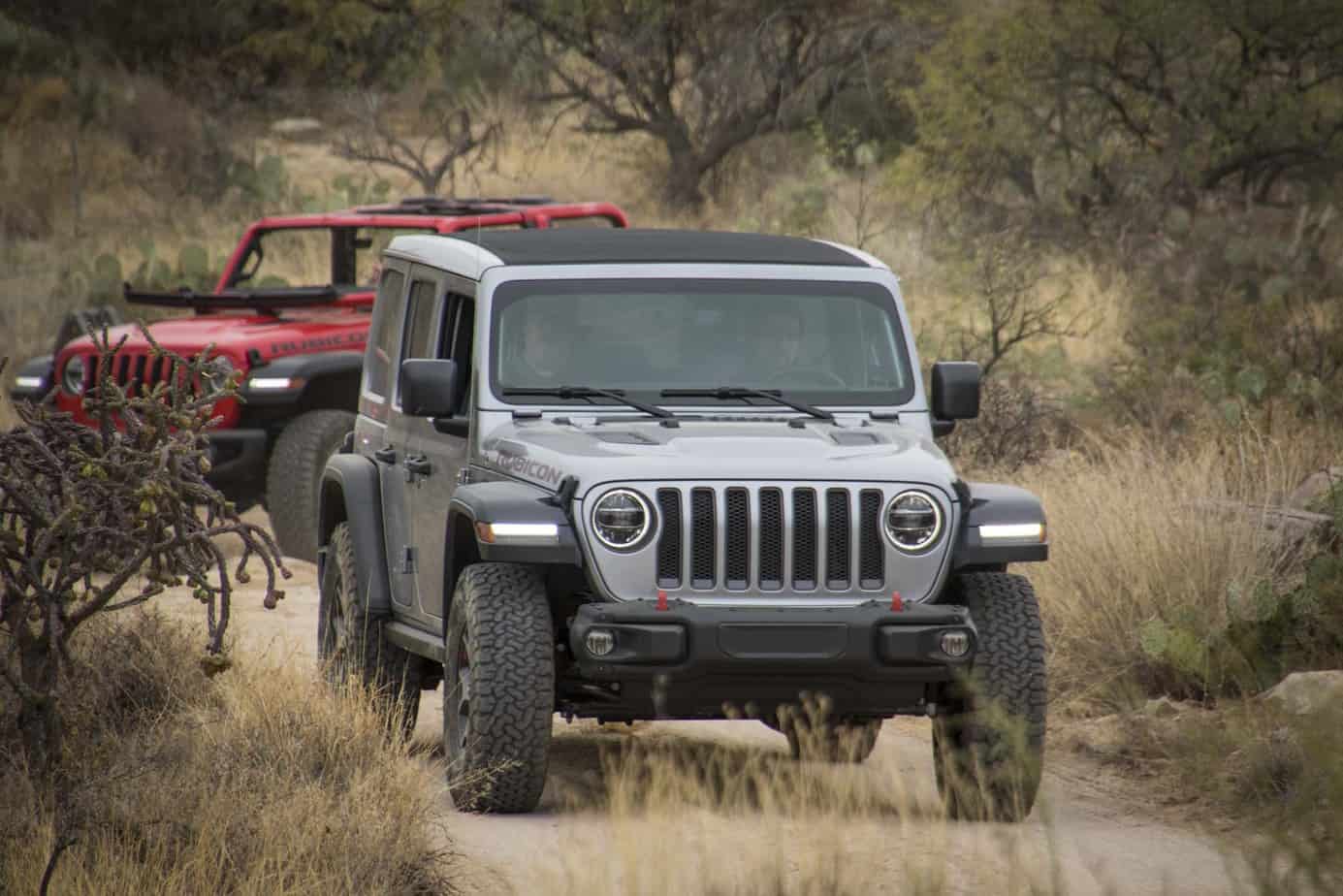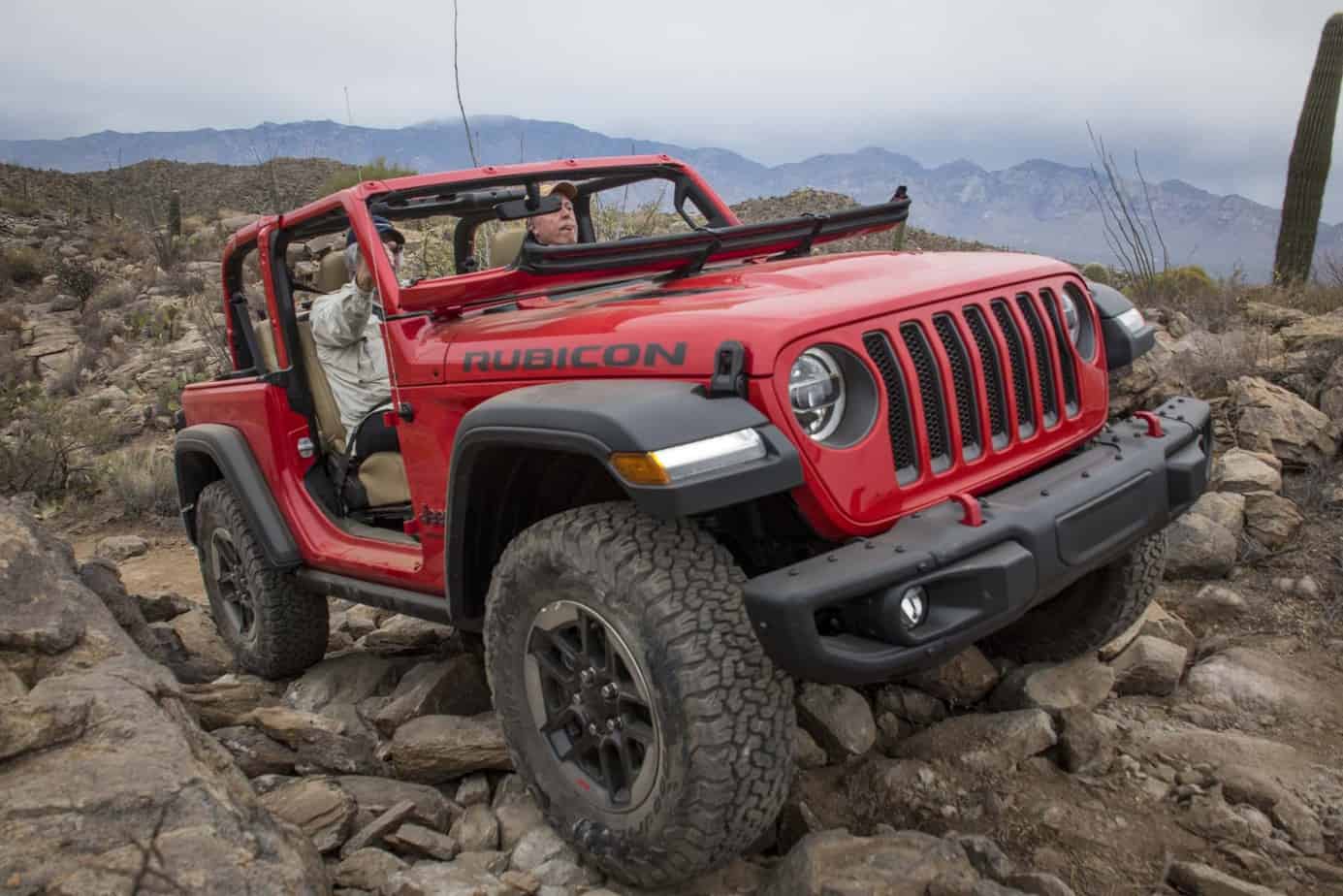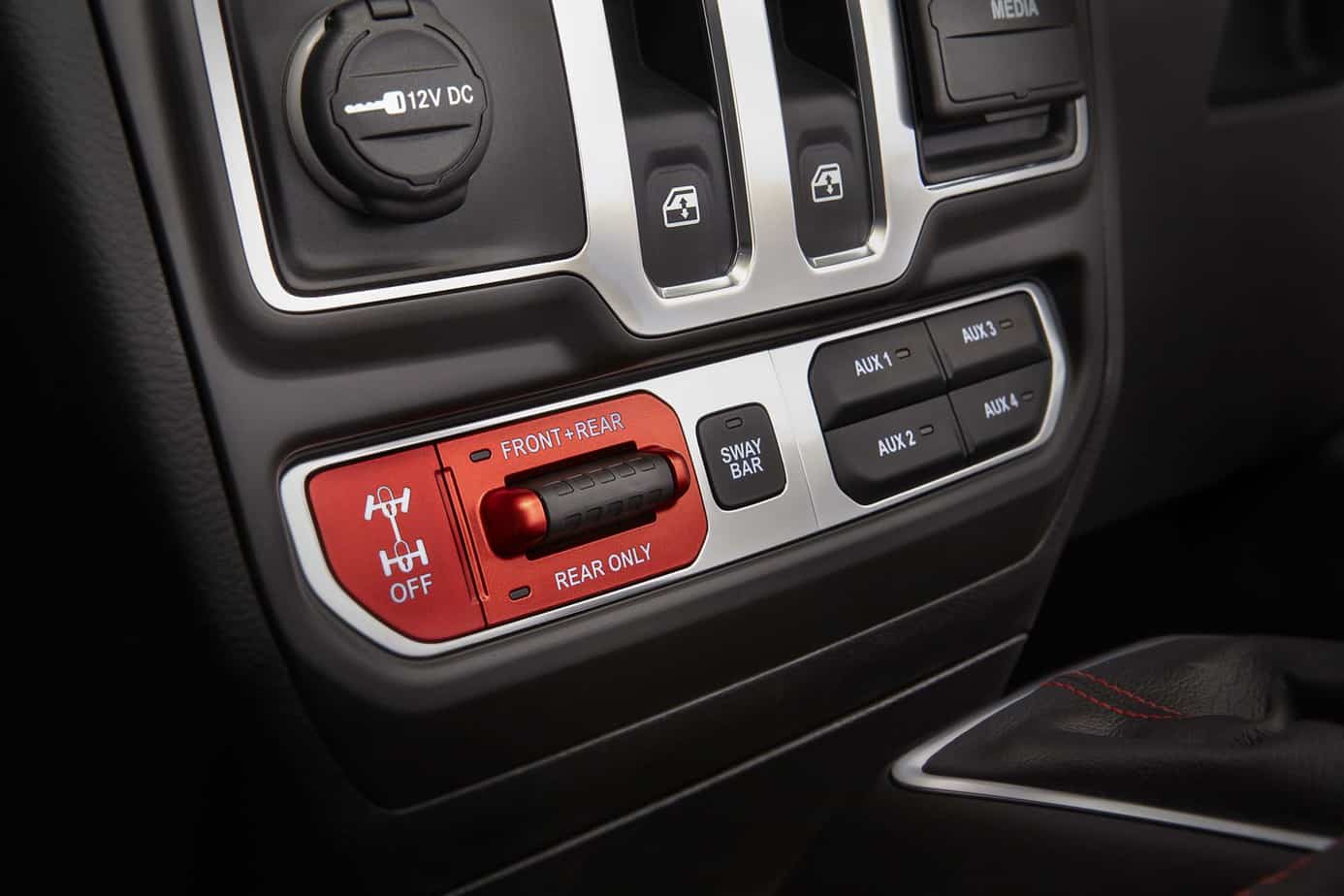When the Wrangler made its début in 1987 as the YJ, Jeep purists poked fun at Jeep’s new prodigy, casting derogatory insults such as “Yuppie Jeep” and “Real Jeeps have round headlights.” While I agree with them regarding round headlamps, the YJ retained the DNA of its venerable predecessors in the CJ lineup. It had solid axles, a reliable 6-cylinder mill, and traditional leaf springs. A decade later we met the coil-sprung TJ, and in 2007, the internationally acclaimed JK. When Jeep announced that a new generation of Wrangler would replace the JK, the public, as well as those in the media, feared the brand would succumb to soccer-mom factor: a wind-tunnel-designed land sled sans proper chassis and solid axles. I voiced my concerns with Jeep insiders during the last few years—that the Wrangler sets the bar for all four-wheel drive platforms and anything less would be the beginning of the end for the seven-slot legacy. They assured me, “We won’t screw up the Wrangler.” After spending time in the JL, I can comfort you in saying all is well in the world of the Wrangler. Let me walk, no, drive you through what’s new, what I love, and what I could do without.
Traditional Values
Regardless of what bells and whistles have been added to a vehicle’s interior and aesthetics, I always look at its bones first, and I like what I’m seeing. The body-on-frame design, five-link coil sprung suspension, and live axles fore and aft—everything we expect from Wrangler—live on. The Sport and Sahara retain Dana 30 and 35 axles, a Command-Trac NV241 transfer case, and optional Trac-Lok limited-slip out back. The Rubicon’s Dana 44s are slightly wider, but have been upgraded with larger-diameter axle tubes and a better forging process. Its NV241OR Rock-Trac 4:1 low range transfer case and Tru-Lok electronic locking differentials remain; paired with the new D478 6-speed manual transmission (now cable operated), which features a stump-pulling 5.12:1 first gear, the final drive ratio is a class-leading 84.13:1. The 850RE 8-speed automatic (4.7:1 first gear) kills the competition with a whopping 77.2:1 ratio. As a guy who learned his technical driving skills on the Rubicon Trail, this resonates in a big way.




From any angle and any distance, one glance at the JL and you know you are looking at a Wrangler. There are subtle changes though, some seen, and some beneath the paint. In an ongoing attempt to reduce weight, engineers revisited the chassis design and materials. By implementing high-strength steel they have not only increased rigidity, but also shaved 100 pounds off the scale. From an aesthetics standpoint, the hood dives a little lower at the front, the grille has a defined lateral V shape, and the windshield rakes back a bit more. A functional vent now sets behind the front fenders which vacates airflow from the engine compartment. Side latches still secure the hood, but have been improved to eliminate the buffeting experienced with the JK. Lighting has been updated with LEDs, and front fenders now carry wide corner lights. Not perceptible to the eye but significant to GVWR, a number of body components (doors, hood, fenders, windshield) are now aluminum, and the rear gate is magnesium, reducing mass by an additional 100 pounds.




Forged-steel, frame-mounted recovery points are back, along with an electronic sway bar disconnect, and Rubicon models offer an optional winch-ready modular front bumper and Warn winch. Providing grip to the tractive surface are Baja-proven BFGoodrich All-Terrain KO2s wrapped around 17-inch polished aluminum wheels.

Although we don’t see many Wranglers on the trail with their windshields down, there is nothing like tooling through the backcountry on a summer day with a 360-degree view and the occasional bug in your mug. As is the tradition “going back to 1941,” you can still kick the glass forward. Compared with the JK’s 2-hour removal process, the JL offers an unrestricted view with just a 5-minute investment. This is accomplished via a new structural A-pillar, permanent header bar, and reduction of hardware.

Under the Hood
Back in the saddle will be the venerable 3.6-liter Pentastar aluminum-block V6 mill. I’ve heard people whine about having a “minivan” motor in their Jeep, but I can tell you that the minivans got the sweet end of the deal. The Pentastar puts out 285 horsepower, 260 pound-feet of torque, and has proven to be a reliable and efficient powerplant. It will be joined by two new options: the first being a turbo-charged 2-liter, 4-cylinder that generates 270 horsepower and 295 lb.-ft. of torque. On the road and trail, this new four-banger was no slug, its power band feeling appropriate for the JL’s size and mass. Although EPA fuel economy figures (not available yet) should best the V6’s 18 city/23 highway, I feel this offering is another effort by the company to adhere to increasingly strict CAFE requirements rather than a replacement for the Pentastar.

The Jeeping public (along with journalists like me) have pined for a diesel Wrangler for years, and we’ll finally get it. The 3.0-liter EcoDiesel V6, which we’ve enjoyed in the Grand Cherokee and RAM 1500, will make its début with 2019 models, but only mated to the automatic transmission. Stay tuned, as we have our name in the hat for a loaner unit.

Is Bigger Better?
Is the Wrangler going the way of the once-compact truck segment, encroaching on the full-size realm? While the width of all models is technically unchanged (.1-inch increase), overall length and wheelbase have been stretched: the 4 door by 3.5 and 2.4 inches respectively (188.4/118.4) and the 2 door a bit less at 2.5 and 1.4 inches (166.8/96.8). This data alone would lend one to think the JL would be lower, have a reduced breakover angle, be more susceptible to getting hung up on obstacles, and maneuver like the Titanic. Not so, my seven-slot aficionados.

After watching the auto industry run scared from so-called consumer advocates (you know the guy) and being sued for producing vehicles that spontaneously flop over in the middle of the road—apparently without any input from the driver—I’m impressed to see Jeep just say “no” to these whack jobs. Approach, departure, and breakover angles have actually been increased over that of the JK (44, 37, and 22.6 degrees respectively on the 4-door) while maintaining 10 inches of ground clearance under the chassis (10.8 on the Rubicon). In short, the JL is no low-rider Wrangler. They also managed to decrease the turning circle, which was noticeable while backing into tight parking spaces, and a big plus on the technical, Rubicon-style test track. As for payload and towing capacity (2 door/2,000 pounds, 4 door/3,500 pounds w/ Pentastar), and GVWR, they are basically unchanged for all models.
The Cockpit
The Wrangler design team did a number on the JL’s interior, drawing from and including subtle accents from the CJ and Willys. Considering the plethora of dials, knobs, buttons, and LCD screens they shoehorned on the dash, it is surprisingly uncluttered and ergonomically pleasing. The instrument cluster contains the normal array of information, but adding to it is a full-color center display that, via its numerous modes, monitors all vehicle functions and can be customized for personal taste.






The fourth-generation Uconnect features wheel-mounted controls, hands-free operation, and up to an 8.4-inch touchscreen. Apple CarPlay and Android Auto pair with nearly any smartphone, and navigating the various menus is quite intuitive. While the Uconnect WiFi hotspot has been available for years, the new system features 4G connectivity for up to eight devices. Keeping up with our electronic times, there are plenty of 12-volt and USB outlets as well as auxiliary inputs for the audio system; SiriusXM radio is optional.

Locker controls on the Rubicon are now more intuitive. Pressing the console-mounted toggle down engages the rear, press up, and you have front and rear. A simple “off” button disengages both. As with previous generations, one can still pull the carpet out for an easy wash down of the interior. New grab handles on the A-pillar are well positioned and provide a safe place for hands in precarious situations.

ABS and electronic stability control (ESC), in my opinion, are lifesavers during high-speed emergency maneuvering, and hill-start assist can be handy with a manual transmission in steep terrain. However, I could do without many of the other beeping and buzzing nanny features such as the ParkView backup camera, rear park assist, blind-spot monitors, and the list goes on. Fortunately, as with the engine start/stop (ESS), you can turn most of them off.
Road and Trail
There is no argument that the Wrangler is one of the most capable 4WD platforms on the global market, but for the average consumer, its road manners have left a lot to be desired. After spending a day on and off the pavement, I can tell you that on-road handling is greatly improved. The longer wheelbase and wider track render a more stable feel. It corners flatter, tracks better, and is more predictable during emergency lane changes and braking. Much of this is due to the enhanced electronic stability control, which includes features such as roll mitigation, trailer-sway control, and ready alert braking (RAB). New for the JL is electro-hydraulic power steering. I found it to be very responsive and provide excellent feedback at the wheel. Though I’m not a fan of adding complexity, this system works well. Bravo to Jeep’s engineering team on all accounts.

Our off-pavement test loop was hands down the most difficult any OE has put journalists on—obstacles were easily as challenging as sections of the Rubicon Trail. While I would normally engage a locker or two, I decided to only utilize the traction control system, or brake lock differential (BLD) which is standard on all models. Using threshold throttle modulation, I can’t emphasis how impressed I was with the BLD’s ability to monitor tire slip and apply power to the appropriate wheel. In the past, wheel speed needed to reach a certain rate to engage, an unnerving and clunky operation. The new BLD system is seamless and virtually transparent to the driver, and (I’ll get lambasted for this one) nearly eliminates the need for lockers.

What’s Next?
Overall, I can say I’m very impressed with the newest member of the Jeep family; it has the requisite DNA of its predecessors and more. On-road drivability, comfort, and safety have been refined, and its off-pavement tenacity is everything we’d expect from the brand’s iconic top-down, wind-in-your-face, seven-slot icon. I’m glad to know that all JLs will be built by the company’s dedicated craftsmen in the Toledo, Ohio, plant. Jeep feels that not only U.S. consumers, but also overseas Wrangler buyers place a high value on the Americana ethos and quality of construction associated with the “Made in USA” stamp of approval. I agree.





One Comment
Tom Saroch
October 2nd, 2018 at 3:28 amJust came back from Moab. Did all the major trails with “big boys” in our bone stock JL Rubicon. Many times they scraped when I did not. All I heard was ” you need 35 tires”. I went we’re they went. I only used my lockers 2 times, they many times. It turned shorter,rode over rocks better, hit skids & number less. Bottom line, the JL kicked but in stock trim.Oh, by the way I am 74, so the jl did one heck of a job for an old buzzard playing with the young “big bad boys” with all the high $$ mods. Good job the engineers did.It really works ,also the wife loved it,& only got scared 3 or 4 times.